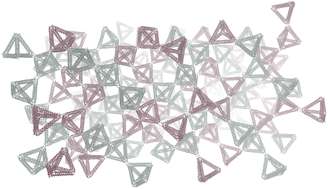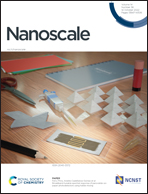A simple solution to the problem of self-assembling cubic diamond crystals†
Abstract
The self-assembly of colloidal diamond (CD) crystals is considered as one of the most coveted goals of nanotechnology, both from the technological and fundamental points of view. For applications, colloidal diamond is a photonic crystal which can open new possibilities of manipulating light for information processing. From a fundamental point of view, its unique symmetry exacerbates a series of problems that are commonly faced during the self-assembly of target structures, such as the presence of kinetic traps and the formation of crystalline defects and alternative structures (polymorphs). Here we demonstrate that all these problems can be systematically addressed via SAT-assembly, a design framework that converts self-assembly into a Boolean satisfiability problem (SAT). Contrary to previous solutions (requiring four or more components), we prove that the assembly of the CD crystal only requires a binary mixture. Moreover, we use molecular dynamics simulations of a system composed by nearly a million nucleotides to test a DNA nanotechnology design that constitutes a promising candidate for experimental realization.

- This article is part of the themed collection: Emerging concepts in nucleic acids: structures, functions and applications


 Please wait while we load your content...
Please wait while we load your content...
